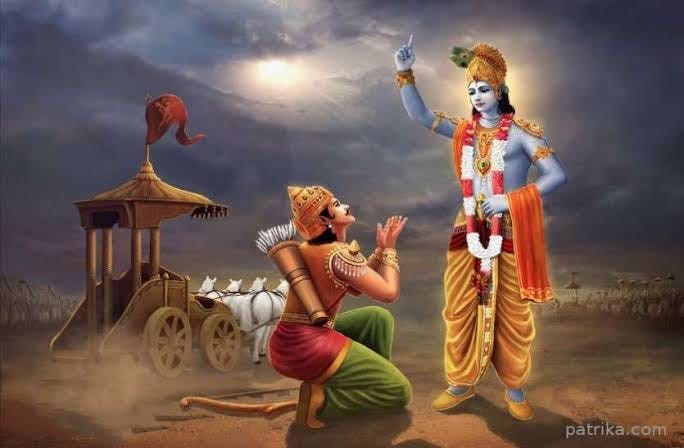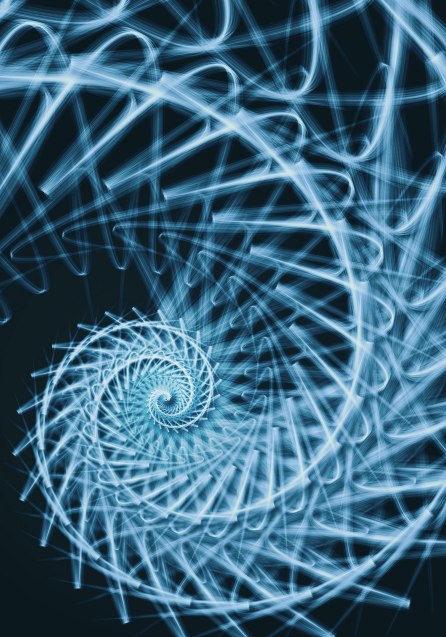
"When meditation is mastered, the mind is unwavering like the flame of a lamp in a windless place." – Bhagavad Gita 6.19

Does consciousness change the universe, or merely witness it? Indian yoga philosophy and modern quantum physics ask that same question in different languages. Maharishi Patanjali gives us a precise psychology of mind and awareness; Krishna, in the Bhagavad Gītā, classifies the mind as a sense organ and explains how it defines experience; and twentieth-century physics wrestles with “observers,” superpositions and the infamous Schrödinger’s cat. Read together, they don’t contradict - each illuminates a different layer of reality.
Patanjali places mind (citta) squarely inside Prakṛti. It is not consciousness itself; it is an instrument that reflects it, like a lake reflecting the moon.
Vṛttis (mind-waves) are the patterns and perturbations - sensations, images, memories, narratives - that colour experience. As long as vṛttis churn, we see the world through them; still, them and the Seer (Puruṣa) abides as itself.
The inner instrument (antaḥkaraṇa) has functional layers: manas (sensory processing/attention), ahaṁkāra (I-sense/ownership), buddhi (discrimination/intellect). All are Prakṛti.
Yoga does not claim “thoughts bend atoms.” It claims vṛttis shape the world we live in phenomenologically - our meanings, motives, reactions and thus our karmic trajectories. Change the mind and thereby change your experienced universe.
This is why Patanjali can simultaneously say that mind patterns change your world and Puruṣa is forever separate from the machinery of nature.
The Gītā repeatedly locates spiritual work at the interface of senses → mind → intellect → Self (3.42). By calling mind the sixth sense (15.9), Krishna emphasizes:
"The mind selects and assembles raw sensory inputs into a coherent world."
"An untrained mind projects craving/aversion; a trained mind sees with equanimity." (2.14; 2.64–65)
Mastery of mind is not about denying matter but about cleaning the lens through which the Real is known. Again, this is epistemic (how we know) rather than ontic (what exists): the mind governs access to reality; it does not conjure matter into being.
Among the most illuminating demonstrations of quantum behaviour is the double-slit experiment. In its simplest form, a barrier is constructed with two parallel narrow openings, placed a short distance in front of a detection screen or photographic plate. A source then emits particles - these could be photons (particles of light), electrons, or even larger atoms - aimed toward the barrier. Classically, if we were to fire solid particles such as marbles, each marble would pass through one slit or the other, striking the screen directly behind its slit. Over time, this produces two distinct, well-defined bands on the screen, matching our everyday expectation of how particles behave.
If instead we send water waves toward the barrier in a tank, each slit acts like a new wave source and the two emerging waves overlap. Where the crests of the waves meet, they reinforce each other (constructive interference) and where a crest meets a trough, they cancel out (destructive interference). This produces a regular sequence of bright and dark bands on the detection screen - an interference pattern characteristic of waves.
Now comes the quantum twist. When individual photons or electrons are fired one at a time - slow enough that no two are ever in flight together - each lands on the screen as a discrete particle-like dot. However, as the dots accumulate, a wave-like interference pattern gradually emerges. This suggests that each quantum particle somehow “samples” both slits simultaneously, behaving as if it were a wave spread out over space, its possible paths described by a mathematical wavefunction. Only when we attempt to detect which slit the particle actually passes through does this behaviour change: the act of measurement destroys the interference pattern and the results revert to two separate particle-like bands.
Another decisive twist occurs when one introduces a “which-slit” detector. As soon as a measuring device or observer is added to determine the particle’s path, the interference pattern vanishes and the results revert to two distinct bands (acts like particle instead of wave). In the Copenhagen Interpretation, this means that experiments showing a particle’s properties hide its wave-like behaviour and experiments showing wave-like behaviour hide its particle-like properties.
Popular accounts often say, “the electron behaves like a wave until someone looks at it,” implying human consciousness collapses the wavefunction. In reality, collapse is triggered by any irreversible interaction with the environment - what physicists call decoherence.
Schrödinger enters with a surgical counterexample to refute these flawed conceptions.
The experiment is set up with a sealed box with a cat, a single radioactive atom (50% chance to decay in an hour), a Geiger counter wired to release poison on detection. Quantum theory assigns the atom a superposition (decayed + not-decayed) before measurement.
The chain: atom → counter → mechanism → poison → cat. If superposition simply “spreads up the chain,” we get a grotesque macro-superposition: the cat is half alive, half dead, cat is alive and dead, etc.
If you now say human awareness is required to “collapse” this state, you imply the cat’s life status depends on a person peeking. Schrödinger intended this to sound absurd. Something physical inside the box should already have resolved the outcome long before any human looks.
Schrödinger’s deeper commitments:
The cat thought experiment thus undercuts the idea that human consciousness is the trigger that makes reality “real.”
Developed decades after Copenhagen (notably by Zeh and Zurek), environment-induced decoherence explains why classical definiteness emerges without appealing to minds:
Moreover, the Copenhagen Interpretation was also rebutted by the point that the “observer” in this framework is not human consciousness but any macroscopic interaction capable of recording an outcome - an apparatus, a photographic plate or even environmental scattering. Popular accounts that equate observation with mental awareness misrepresent Bohr and Heisenberg’s original position.
Putting the pieces together,
Therefore, The claim “consciousness creates physical reality” is not required by quantum theory and is not what Patanjali or Krishna teach.
The claim “consciousness witnesses’ reality while the mind shapes experience” is precisely what Patanjali and Krishna teach and it sits comfortably beside modern physics.
Spiritual practice: Work where causality is strongest in your life - in the mind. Still vṛttis, refine attention, purify motives. The “universe” that changes is your lived horizon: clarity, compassion, freedom.
A deeper unity: When the mind is clear, says Patanjali, the Seer abides as itself. When measurement is clear, says physics, the world exhibits definite structure. In both, clarity - of mind in one case of interaction in the other - dispels confusion.